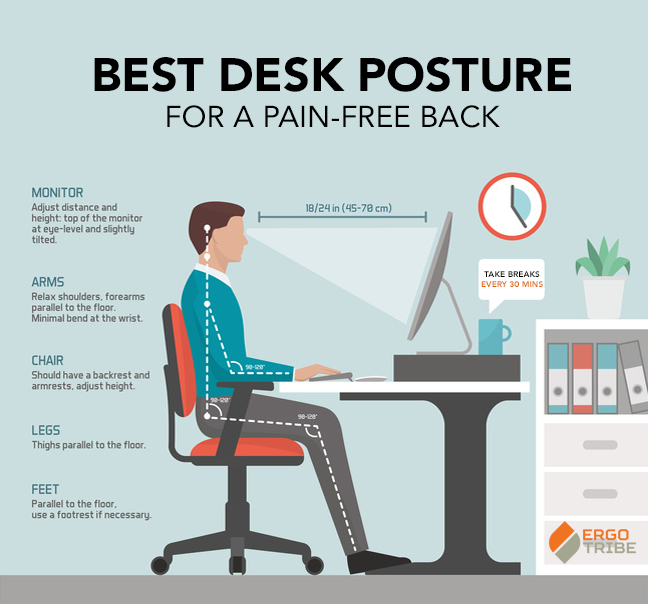Ergonomics is the scientific discipline concerned with the relationship between workers and the tasks they undertake, particularly with regard to physical aspects of the workplace. In a traditional workplace, as part of their obligation to ensure the health, safety and welfare of their workforce, employers carry out ergonomic risk assessments that apply, directly, to each employee. However, according to the latest figures from the Office for National Statistics, nearly one-third of the workforce in the United Kingdom is working remotely as the result of the Covid-19 pandemic. Consequently, employees may find themselves working for long periods with ill-fitting, poorly adjusted or wholly inappropriate furniture and equipment, leading to substandard posture and hence discomfort, pain and injury. The British Chiropractic Association website contains some good advice regarding correct posture for everyday tasks.
Ergonomic Seating
Unfortunately not everyone has the budget, inclination or space to create an ergonomic home office, but the fundamental principle is to avoid remaining, unsupported, in the same position for prolonged periods and to vary your posture throughout your working day. Corrective measures to reduce the ill effects of shoddy posture need not cost you a fortune. If your work involves sitting down, conventional wisdom dictates that you should adopt a ‘neutral’ posture, with the seat of your chair adjusted such that your feet rest flat on the floor, or on a footrest, with your hips higher than your knees and your lower back against the lumbar support. Clearly, adjustability is the key to avoiding so-called ‘static muscle loading’ so, if you are in the market for a chair for your designated workspace, look for one that allows you to adjust:
- seat height, preferably pneumatically
- seat depth
- back height
- armrest height, if applicable
Similarly, choosing a chair that allows you to swivel through 360º introduces the possibility of varying your posture, periodically, throughout the day.
Ergonomic Workstation Design
If you use a computer, position your keyboard and mouse in the centre of your workspace, at elbow level, such that you can reach them without placing any undue strain on your neck, shoulders or upper arms. Keep your elbows at 90º, or thereabouts, and your wrists straight. Ideally, the top of your computer monitor should be at, or slightly below, eye level, so you may need to invest in an inexpensive, adjustable screen riser to achieve correct positioning.
Depending on the dimensions of your monitor, your ideal viewing distance is between 18″ and 30″. Eye strain can also be an issue so, every 20 minutes, look away from your screen and focus on an object 20 feet away for 20 seconds. Of course, you could also take the opportunity to move about your home, or outside if possible, which will also help to offset fatigue and some of the more serious effects of a sedentary lifestyle, such as inactivity-induced thrombosis. Depending upon the orientation of your workspace – ideally, without a window directly in front of, or behind, your screen – you might like to think about employing Venetian blinds or window shades to reduce glare, eye strain and headaches.
Pain due to poor ergonomics
If you are currently suffering with a bad back or neck due to poor ergonomics, give us a call on 01962 861188 to book in your initial consultation, and to discuss how to improve the ergonomics of your workstation.











